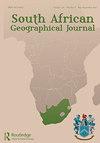激光雷达为南非开普敦市绘制的棚屋足迹图
IF 1.4
4区 社会学
Q3 GEOGRAPHY
引用次数: 2
摘要
棚屋提取是解决发展中国家当代地理复杂性的一个日益增长的应用领域。提供棚屋数量的传统地面调查正在被空间数据收集快速发展带来的机遇所取代。自动化和报告高准确度的能力仍然是数字棚屋提取矩阵复杂性质的关键。本研究使用8厘米航拍影像和激光扫描数据来绘制建筑环境中的非正式住区区域。研究设计包括一组通过分析采样棚户区/非棚户区来定义棚户区足迹的实验。调查了平均棚屋高度,未分类点的行为,非地面点的数量,扫描纹理和强度变化。将五参数签名应用于无坑归一化数字表面模型(NDSM),正如预期的那样,测试和验证证明适合于不同的棚屋识别。该方法报告了在1米宽的边界位置公差范围内95%的大沉降检测,以及在多层棚屋和复杂棚屋的孤立情况下的一些误报。建议将结果纳入全市范围的城市规划框架,也可以调整以包括社会和环境参数。本文章由计算机程序翻译,如有差异,请以英文原文为准。
LiDAR derived shack footprint for the City of Cape Town, South Africa
ABSTRACT Shack extraction is a growing application area for solving contemporary geographical complexities in developing countries. Traditional ground-based surveys that provided shack counts are being overtaken by the opportunities around rapid advances in spatial data collection. The ability to automate and report high accuracies against ground truth remains key to the complex nature of the digital shack extraction matrix. This study uses 8 cm aerial footage and laser scanning data to map informal settlement areas within built environments. The research design includes a set of experiments in defining the footprint of shacks obtained through profiling sampled shack/non-shack areas. Average shack heights, behaviour of unclassified points, number of non-ground points, scan texture and intensity variations were investigated. A five-parameter signature was applied to a pit-free normalized digital surface model (NDSM) and as expected on both test and validation, proved suitable for distinct shacks identification. This approach reported a 95% large settlement detection within a 1-metre-wide boundary position tolerance, coupled with a few false positives in isolated cases of multi-storey, sheds and also complex shacks. The results are proposed for inclusion in city-wide urban planning frameworks that can also be tweaked to include social and environmental parameters.
求助全文
通过发布文献求助,成功后即可免费获取论文全文。
去求助
来源期刊

South African Geographical Journal
GEOGRAPHY-
CiteScore
3.40
自引率
7.10%
发文量
25
期刊介绍:
The South African Geographical Journal was founded in 1917 and is the flagship journal of the Society of South African Geographers. The journal aims at using southern Africa as a region from, and through, which to communicate geographic knowledge and to engage with issues and themes relevant to the discipline. The journal is a forum for papers of a high academic quality and welcomes papers dealing with philosophical and methodological issues and topics of an international scope that are significant for the region and the African continent, including: Climate change Environmental studies Development Governance and policy Physical and urban Geography Human Geography Sustainability Tourism GIS and remote sensing
 求助内容:
求助内容: 应助结果提醒方式:
应助结果提醒方式:


